Essential Tips for Cleaning Your BlendJet Effectively
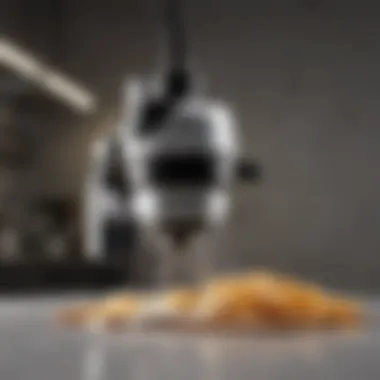
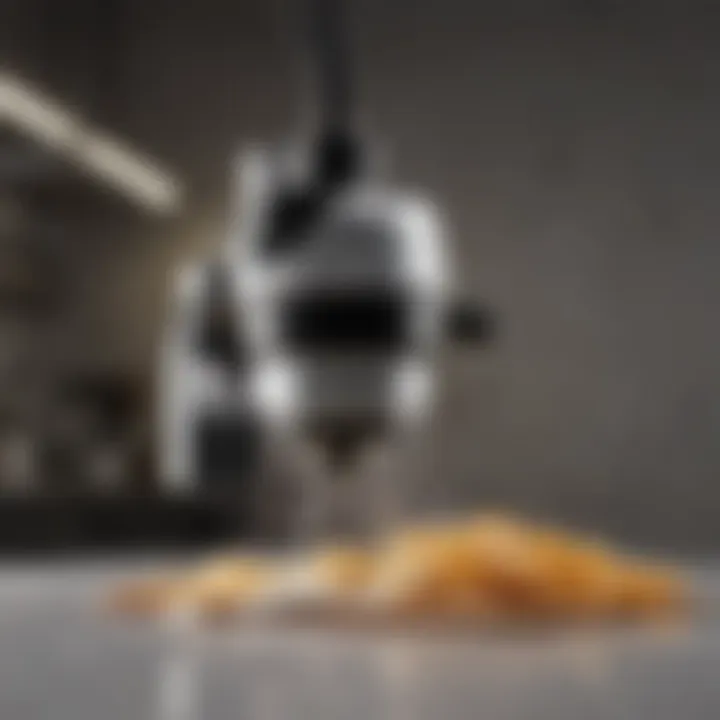
Intro
Keeping your BlendJet clean is not just about aesthetics; it affects the performance and lifespan of the device. Maintaining optimal hygiene and functionality gets more difficult if you do not clean it thoroughly after use. Every time you blend an aromatic smoothie or a refreshing juice, residual flavors and particles are left behind. This guide aims to walk you through effective cleaning methods, tips for proper care, and insights for enhancing your blending experience.
The section below discusses practical cleaning strategies for all users, whether seasoned aficionados or new BlendJet owners. Say goodbye to grime and enjoy every blend, ensuring your appliance stays functional and performs smoothly for many blends ahead.
Preamble to BlendJet Cleaning
Cleaning your BlendJet is crucial for several reasons. It ensures not only the appliance’s functionality but also its durability. A properly cleaned BlendJet enhances the blending experience while minimizing the risk of any health issues from food residue. The focus in this section will be on the significance of regular care and maintenance, as well as understanding the components involved in this device.
Why Regular Cleaning Is Necessary
Regular cleaning of your BlendJet is essential to maintain its performance. Over time, blending certain ingredients can lead to the build-up of residue not only in the jar but also within the mechanical components. This residue can create an environment for bacteria and mold growth, posing potential health risks.
The appliance’s blades are prone to grime, and if they are not cleaned properly, it may affect the texture of future blends. Additionally, a well-maintained BlendJet aids in extending the life of the motor and battery, allowing them to function optimally without unnecessary strain. In summary, the task of cleaning should be viewed as a fundamental maintenance step to preserve the appliance’s integrity and the quality of blended drinks.
Understanding BlendJet Components
To effectively clean your BlendJet, a basic understanding of its components is necessary. The major parts include the blending jar, blades, motor base, and seal ring. Each of these plays a critical role in how the machine operates.
- Blending Jar: This part holds the ingredients and is typically made of plastic or glass. It is where stains and food remnants accumulate. Regular inspection is important.
- Blades: The blades are sharp and efficient but can also trap food particles. Proper cleaning is essential to keep them effective.
- Motor Base: This includes the electronic parts and should be carefully wiped but not submerged in water, as moisture can damage the wiring.
- Seal Ring: This component ensures that the jar is sealed during blending. If not maintained properly, it can harbor gunk leading to leaks.
Taking the time to learn how each part functions aids in cleaning and promoting longevity for your BlendJet. Familiarity with these components makes it easier to identify problem areas, enhancing your clean-up efforts.
Basic Cleaning Steps
Keeping your BlendJet clean requires regular attention to basic cleaning steps. These steps not only enhance hygiene but also ensure the longevity of the appliance. Neglecting the basic cleaning might lead to build-up that affects performance or impairs the taste of the ingredients. Investing effort in maintaining a clean blend container prevents any undesirable flavors resulting from residues left behind. Understanding the fundamental cleaning process can simplify this every day task.
Initial Rinsing
The initial rinsing of your BlendJet is crucial and should not be overlooked. Just after you finish blending, take the time to rinse the container with warm water. This process aids in loosening up any leftover particles that might stick to the sides and base of the jar. It helps in preventing residue accumulation and also minimizes the effort needed in subsequent cleaning stages. You do not want mold or unpleasant smells to develop due to remnants sitting too long. A swift rinse can dramatically reduce cleaning time later.
Using Soap and Water
Once the initial rinsing is done, the next step is to employ a mixture of soap and water. This process is fundamental for effective disinfection. Choose a soft sponge to prevent scratching the surfaces. Add a few drops of mild dish soap to warm water, immerse your brush or sponge, and gently scrub all parts of the jar and lid. Pay special attention to the inside, where food debris often clings stubbornly. A soap solution not only removes grease but also has antibacterial properties, enhancing the overall cleanliness of your appliance. It serves a dual purpose in maintaining aesthetic quality and, importantly, hygiene of your BlendJet.
Rinsing Thoroughly
It is essential to rinse your BlendJet thoroughly after cleaning to ensure that no soap residue remains. Soap that lingers can contaminate your next blend and affect the flavor of your drink. Run warm water through the jar multiple times, ensuring all the nooks and crannies are well rinsed. Giving it a final water swirl just before drying helps in recursively removing any soap that may cling. Thorough rinsing is a small step in the process that yields considerable benefits by ensuring every blend tastes just the way it should. Remember, this attention to detail goes a long way in upholding the quality of your blending experience.
Deep Cleaning Techniques
Deep cleaning your BlendJet is essential to ensure it remains a hygienic and efficient appliance for your culinary needs. Normal cleaning may not always reach the grime or residue that can develop inside the blender components over time. Thus, employing deep cleaning techniques can prevent unpleasant odors and enhance its performance. This section introduces several effective methods to carry out deep cleansing.
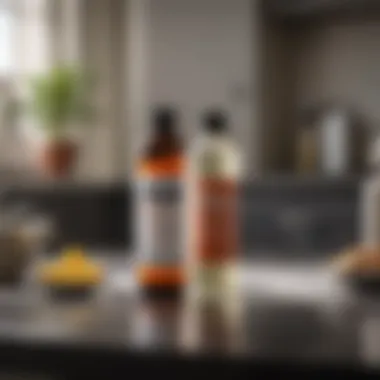
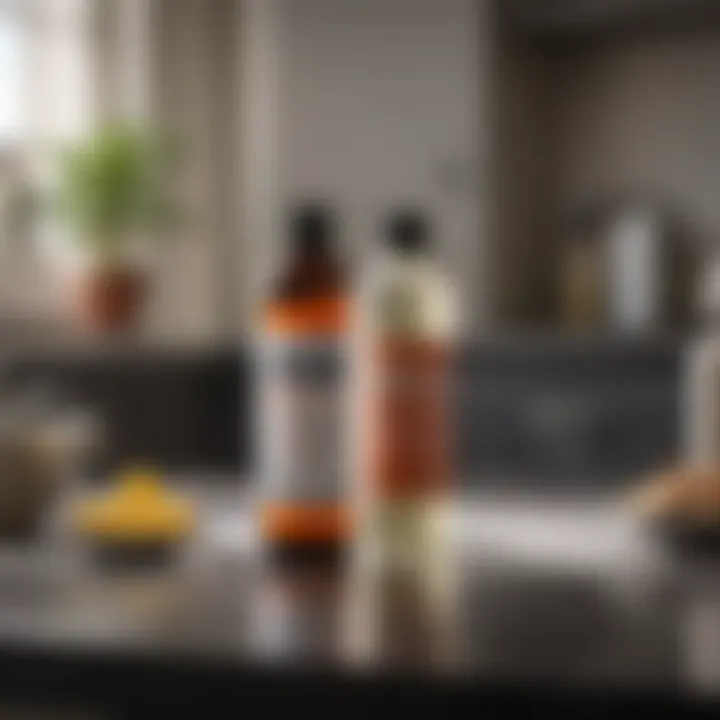
Vinegar and Baking Soda Method
Preparing the Solution
To prepare this solution, you need common household items: vinegar and baking soda. This method utilizes their natural properties that effectively neutralize odors and dissolve stubborn residues. Mix equal parts of vinegar and baking soda in a bowl. The bubbling reaction indicates that they are combining, easing grime break down. This combination is particularly effective while using it in cleaning appliances with potential cross-contamination of food particles. The major characteristic of this solution lies in its efficiency and versatility. This attempt benefits consumers as vinegar is gentle on functional parts of the BlendJet, yet profoundly effective on dirt and buildup.
Application Process
For applying the vinegar and baking soda mixture, pour it directly into the BlendJet cup. Allow it to sit for about 10–15 minutes. This soaking time is vital as it helps in loosening sticky spots or residues. After that, add warm water and blend this mixture at a low setting for approximately 30 seconds. The power of this application process does lies in using gentle friction from the blades to reach hard-to-touch surfaces, cleaning those areas effectively. This method has the advantage of being extremely simple and saves time, making it a popular choice for many.
Final Rinse
Once done mixing, the final rinse is crucial to get rid of any lingering baking soda or vinegar residues after the blend cycle is complete. Fill the BlendJet cup with clean water and blend again to ensure every part is rinsed. After blending, empty the cup and examine if any residue remains. This final step cements cleanliness by washing away any residual baking soda or vinegar, thus ensuring your BlendJet is entirely safe to use again. Proper rinsing avoids potential taste stains from cleaning thus validates the effectiveness of this solution.
Using a Cleaning Brush
Selecting the Right Brush
Choosing the correct brush for cleaning is fundamental. Look for a brush that fits comfortably within the blending jar's curves and angles. Consider one with soft plastic bristles. This will help avoid scratching or damaging interior surfaces while still effectively lifting off debris. The singular feature of selecting the right brush is that it maintains the integrity of the BlendJet's build while ensuring it stays clean. Long-term users will find a specialized cleaner enhances longevity of appliances, preventing early wear and tear on surfaces and blades.
Brushing Techniques
When utilizing a cleaning brush, employ gentle strokes following the blends pattern. Circular motions generally provide even cleaning without damaging sections. However, increase pressure in a few spots if noticing particular stain spots. The key characteristic here lies in understanding dainty scrubbing, ensuring not to apply excessive pressure, thus preserving molecular integrity of materials involved. This method elevates overall device cleanliness. It takes little time versus cleaning with conventional methods and valued for being environmentally-friendly too.
Disinfecting Surfaces
Recommended Disinfectants
For disinfecting your BlendJet, focus on solutions with alcohol or hydrogen peroxide as the primary active agents. These options effectively eliminate bacteria and viruses while being safe so that you won't find any undesired after effects on your food preparation rates. The advantage of using disinfectants optimized for kitchen tools like these lies in immediate application without heavy chemicals while also contributing to regular gothic cleaning cycles.
Application Strategies
To utilize disinfectants effectively, spray them onto the jar and components generously. Ensure that all surfaces are covered. Let it sit for a few minutes to allow it to impart its cleansing properties. On completion, rinse thoroughly with water to prevent any residue of cleaning agents that might alter the taste of future mixtures. These application methods make cleaning a very organized chore and capable of thwarting harmful organisms accumulating. They effectively ensuring long-term use without causing damage, boosting the device in habitual and habitual culinary experiences.
In summary, understanding these deep cleaning methodologies contributes significantly towards maintaining your BlendJet in optimal operating condition. Proper attention here extends not only the life of the appliance but enhances everyday use.
Common Cleaning Mistakes
Maintaining your BlendJet's performance heavily relies on understanding common cleaning mistakes. Everyone wants their appliance to work optimally for blenders, smoothies or any other blending use. Errors made during maintenance can lead to reduced efficiency or damage. Thus, recognizing and avoiding these pitfalls is crucial. Let's explore some typical mistakes and how to circumvent them.
Ignoring Instruction Manual
One of the most frequent errors made by users is simply ignoring the instruction manual. It may seem inconvenient to read a manual, but this document contains essential information specific to BlendJet cleaning.
Most manuals include recommendations for cleaning methods that best suit the materials involved. Plus, they often outline common dos and don'ts for maintaining your device. By skipping this reading, mistakes can easily be made, leading to potential device failure.
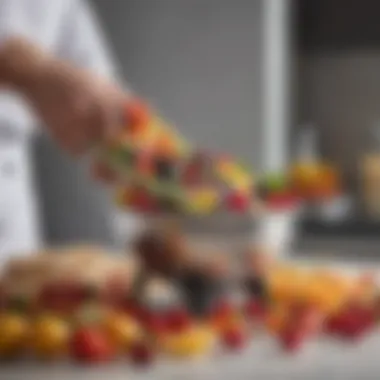
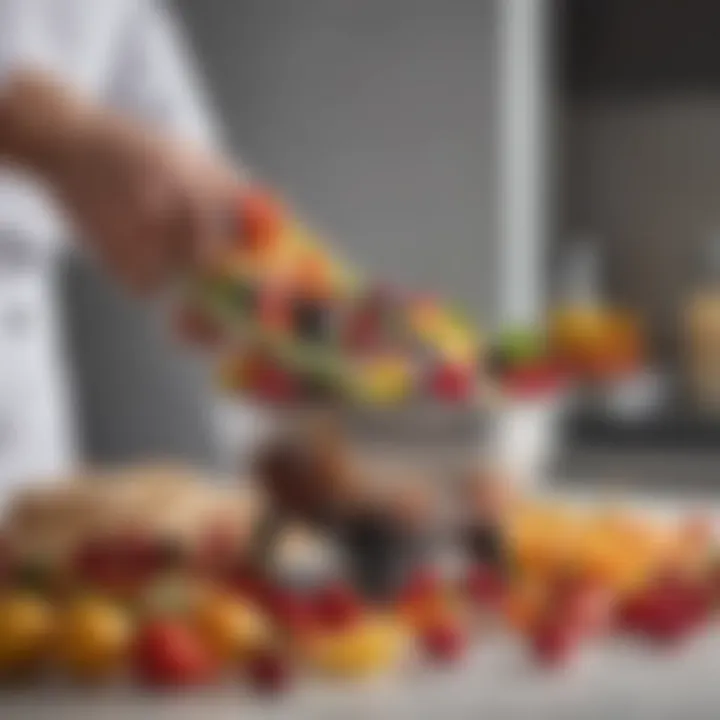
Understanding your BlendJet guidelines ensures that you use the right cleaning materials and techniques. Following the manufacturer’s advice protects the warranty and preserves device functionality.
Using Harsh Chemicals
Another significant oversight is the use of harsh chemicals. Many individuals prioritize cleanliness and decide to use strong cleaners. While cleaning is important, aggressive chemicals can damage the materials of your BlendJet.
The plastic and rubber used in devices like BlendJet can deteriorate with harsh substances. Solutions containing bleach or ammonium can cause cracking or discolouration. Always seek mild, food-safe alternatives for maintaining your appliance.
Even common kitchen products should be used judiciously. The use of strong materials can lead to hazardous chemical residues, endangering food safety. Opt for natural or mild options instead to ensure effective cleansing without harm.
Neglecting Seal Ring Maintenance
Finally, neglecting seal ring maintenance is a prevalent issue among users. The seal ring in a BlendJet plays a crucial role in maintaining air-tightness. If left uncleaned, it can harbor bacteria or mold, severely impacting the appliance's safety.
Regularly inspecting and cleaning the seal ring extends its life and ensures reliable performance. A simple, rinse with warm water can often keep it in top condition. If mold build-up occurs, deeper cleaning methods should be applied, such as using a vinegar solution for thorough disinfection.
In summary, avoiding these common mistakes fosters optimal performance of the BlendJet. By being proactive with the instructions, choosing suitable cleaners, and routinely checking seal rings, users can guarantee their devices run efficiently and hygienically.
Troubleshooting Cleaning Issues
Understanding how to troubleshoot common cleaning issues with your BlendJet is an integral part of its maintenance. This knowledge not only keeps your appliance functioning effectively but also enhances its lifespan. Identifying and resolving specific problems can prevent further damage and preserve the quality of your blending experience. Below are several common cleaning challenges, their potential causes, and actionable solutions.
Persistent Odors
If your BlendJet begins to emit unpleasant smells, it’s usually indicative of residue buildup or improper cleaning. This issue can often arise if you leave contents in the jar for extended periods or when using ingredients with strong scents, like garlic or fish. To eliminate these stubborn odors:
- Cleanup Environment: Regularly test and clean in a well-ventilated area, allowing odor to dissipate.
- Baking Soda Solution: Combine warm water and baking soda into the jar. Let it sit for a few hours before rinsing. This not only deodorizes but also removes stubborn residues.
- Citrus Infusion: Use citrus peels (such as oranges or lemons) blended with water for an additional freshening effect. The acidity helps neutralize odors.
Regular attention to cleanliness can minimize odor issues overall.
Stains on Blender Jar
Stains can accumulate on your BlendJet’s jar, often from colorful fruits or deeply pigmented ingredients like beetroot or turmeric. Not addressing these can lead to discoloration that affects the look of your machine. Here are methods to tackle these stains:
- Immediate Rinse: Always rinse the jar immediately after use to prevent stains from setting.
- White Vinegar Treatment: Create a mixture of equal parts water and white vinegar. A soak of about 15 minutes prior to gentle scrubbing helps lift many stains.
- Magic Eraser: For stubborn spots, a melamine foam eraser can be effective. Use it with caution; abrasion could dull a shine if overused.
Clogs in Blades
Clogs in the blades may not only hamper performance but can also cause accidental damage. If you observe that your BlendJet is struggling to turn on or if solutions are getting stuck in the blade assembly:
- Regular Inspection: Frequently check the blades for debris or blockages to ensure they turn freely.
- Warm Water Flush: Fill with warm water and allow to run briefly when not holding solid contents. This process assists in dislodging buildup.
- Manual Cleaning: If required, unplug and disassemble your BlendJet carefully to access the blade housing. Remove any trapped chunks using a soft brush or cloth.
By diagnosing these common cleaning issues proactively, you maintain the integrity of your BlendJet and enhance your overall user experience. Keep these solutions in mind to address minor problems before they escalate.
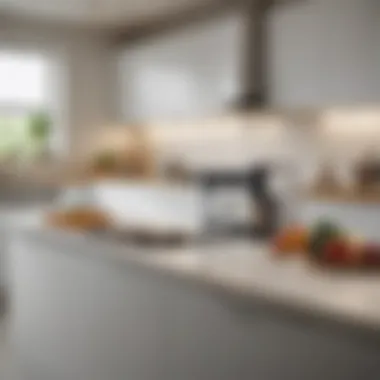
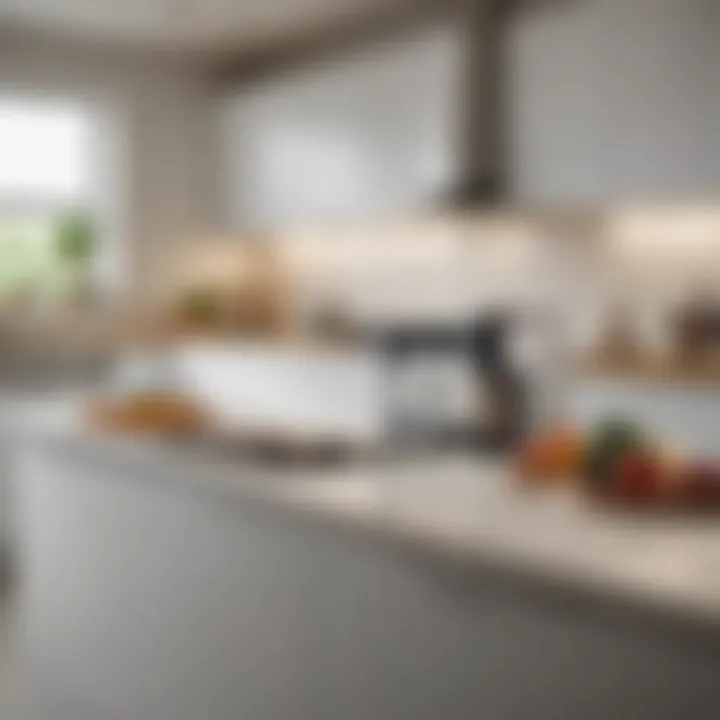
Extending the Life of Your BlendJet
Taking proper care of your BlendJet can significantly extend its lifespan. This appliance is a valuable investment for anyone who enjoys blending smoothies, sauces, or other culinary creations. The longevity of your BlendJet depends on how consistently you maintain and use it. Regular maintenance and proper usage not only enhance performance but ensure the appliance remains functional for longer periods. Incorporating simple practices into your routine can prevent common problems that arise with prolonged use.
Regular Maintenance Schedule
Establishing a regular maintenance schedule is key to keeping your BlendJet in good working condition. It is important to clean the appliance after every use to prevent residue buildup. Additionally, this regular care involves checking the blade installation and ensuring all components are secure. Typically, setting aside a few minutes after usage for quick cleaning helps in maintaining optimum hygiene.
Recommended Schedule:
- After each use: Clean the blending jar and blades immediately.
- Weekly: Inspect the appliance for any signs of wear, such as chiped edges on the jar.
- Monthly: Perform a deep cleaning method using vinegar or baking soda to remove any accumulated odors or stains.
This approach will keep your BlendJet functioning at its best and extends the life of its components.
Proper Storage Techniques
How you store your BlendJet also has an impact on its durability. Incorrect storage can lead to wear and tear, affecting the appliance's performance. Storing the BlendJet in a cool, dry place is essential. Avoid locations where it is exposed to direct sunlight, as UV light can cause the plastic to degrade over time.
Storage Tips:
- Keep assembled: Unless cleaning, it is better to store it intact.
- Use a cover: If possible, use a breathable cloth cover to keep out dust.
- Avoid high temperatures: Storaging near heat sources such as ovens can cause material warping.
Proper storage methods will not only preserve the aesthetic quality of your BlendJet but maintain its working components.
Replacement Parts Recommendations
Eventually, various parts of your BlendJet may need replacement due to wear from regular use. Knowing which components can wear out and when they should be replaced is important. Generally, the blade assembly, rubber seal, and blending jar can be actual need consideration. Monitoring these parts will allow for timely replacements, ensuring your appliance continues to perform.
Recommended Parts for Replacement:
- BlendJet Blade Assembly: Over time, blades can become dull or damaged.
- O-ring Seal: The seal may wear down, leading to leaks.
- Blender Jar: Inspect for any signs of cracking after prolonged use.
Maintaining awareness of these parts will allow your BlendJet to perform effectively for many years.
Regular checks and timely replacements can dramatically reduce issues during blending, enhancing your overall experience.
End
Cleaning your BlendJet is more than just a routine task; it serves to maintain the efficiency and longevity of the appliance. Regular cleaning helps prevent any buildup that might affect performance or produce unpleasant odors. This guide has outlined various strategies, from basic cleaning steps to deep cleaning techniques. These methods can help you tailor your approach based on how you use the device.
Summarizing Best Practices
In summary, it is best to follow some key cleaning practices:
- Frequent Rinsing: Clean your BlendJet soon after each use to prevent stubborn stains.
- Using Mild Soap: Always use mild soap to avoid damaging the surface of the blender.
- Deep Cleaning Periodically: Monthly deep cleans can be beneficial, especially after the preparation of smoothies or sauces that tend to stick.
Adopting these habits will enhance both the performance and hygiene of your BlendJet.
Final Thoughts on Maintenance
Effective maintenance is crucial for optimizing your BlendJet experience. Consider developing a regular cleaning schedule based on your usage frequency. Store the device in a clean place, away from dust or moisture. When necessary, do not hesitate to change parts that wear out over time. Maintaining your BlendJet toxin-free ensures not only great taste but also safety in your food preparation. Integrate these practices for a blender that lasts longer and keeps up with culinary creativity. Keeping your BlendJet clean and well-maintained contributes to a seamless blending experience, making your cooking adventures enjoyable and safe.







